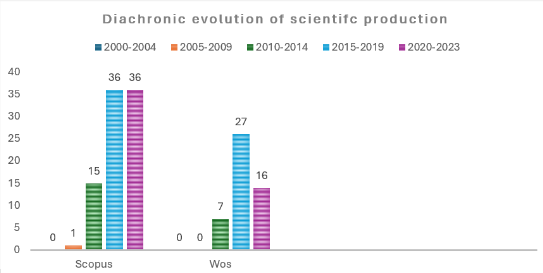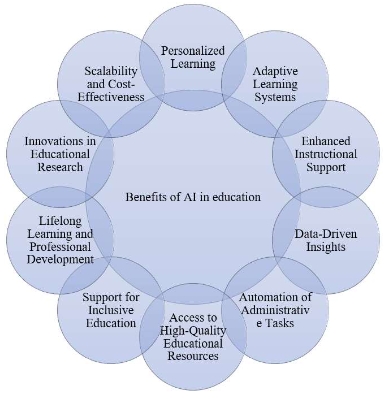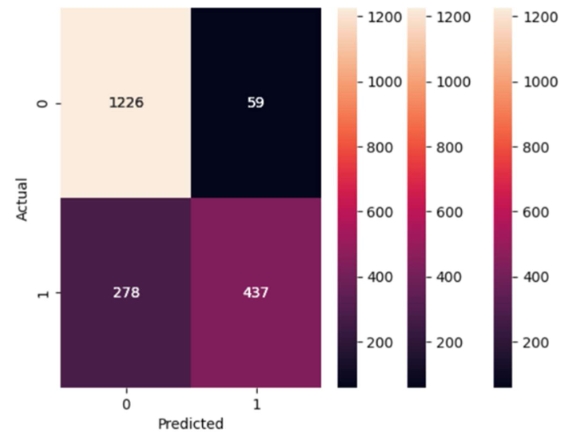The effect of e-learning-assisted instruction on students’ achievement in chemistry
Abstract
This study investigates the impact of e-learning on students’ achievement in chemistry, guided by three research questions and one hypothesis. Using a quasi-experimental pretest-posttest design with a non-randomized control group, 21 Senior Secondary School Two (SS2) chemistry students from four coeducational schools in Nnewi North were randomly selected. Data collection involved a Chemistry Achievement Test (CAT) sourced from WAEC past questions, a Computer Assisted Instructional Package (CAIP), YouTube, and the Chemistry Performance Test (CHEMPET). Instrument reliability, verified through Cronbach alpha procedures, yielded a value of 0.83. Analysis of the data, employing mean, standard deviations, and a significance level of 0.05 in the t-test for the hypothesis, revealed that students using e-learning performed better on post-tests and knowledge retention exams. Notably, female students outperformed males in e-learning-supported teaching. The study underscores the significant difference in performance between male and female pupils exposed to e-learning. Recommendations emphasize the importance of supporting educational computer programs like e-learning for effective teaching and learning of chemistry, calling on curriculum designers, policymakers, and educators to integrate such practical approaches.
References
[1]Hwang GJ, Chien SY. Definition, roles, and potential research issues of the metaverse in education: An artificial intelligence perspective. Computers and Education: Artificial Intelligence 2022; 3: 100082. doi: 10.1016/j.caeai.2022.100082
[2]Chazan B. What is “education”? In: Principles and Pedagogies in Jewish Education. Palgrave Macmillan; 2022. pp. 13–21. doi:10.1007/978-3-030-83925-3_3
[3]The American Heritage Dictionary. Education. Available online: https://www.ahdictionary.com/word/search.html?q=education (accessed on 1 November 2023).
[4]Peters RS. Ethics and Education (Routledge Revivals). Routledge; 2022.
[5]Koretsky M, Keeler J, Ivanovitch J, Cao Y. The role of pedagogical tools in active learning: A case for sense-making. International Journal of STEM Education 2018; 5(1): 18. doi: 10.1186/s40594-018-0116-5
[6]Christie M, de Graaff E. The philosophical and pedagogical underpinnings of Active Learning in Engineering Education. European Journal of Engineering Education 2017; 42(1): 5–16. doi: 10.1080/03043797.2016.1254160
[7]Comings JP. Persistence: Helping adult education students reach their goals. In: Review of Adult Learning and Literacy, 1st ed. Routledge; 2007. Volume 7. pp. 23–46.
[8]Adeifo 1O. Curriculum development in technical education. In: InIvowi UM (editor). Curriculum Development in Nigeria. Ibadan Sam Bookman Educational; 2019. pp. 78–99.
[9]Gbamanja FB. Functional chemistry teaching as bedrock for achieving qualitative science education. Unpublished Paper Presented at the 3rd National Conference Organized by School of Sciences; 2019; Katsina, Nigeria. pp. 22–34.
[10]Nnoli JN. Scrutinizing the benefits of entrepreneurial skills on the motivational level of chemistry students. BOHR International Journal of Social Science and Humanities Research 2023; 2(1): 185–190. doi: 10.54646/bijsshr.2023.47
[11]Blakemore DC, Castro L, Churcher I, et al. Organic synthesis provides opportunities to transform drug discovery. Nature Chemistry 2018; 10(4): 383–394. doi: 10.1038/s41557-018-0021-z
[12]Danso SD. Science teacher education in Nigeria: Challenges and strategies for quality education for sustainable development. Journal of Quality Education, IsahKaita College of Education 2020; 1(1): 84–91.
[13]Lawal YR, Rumah AA, Amadi J. Utilization of instructional materials in teaching chemistry in senior secondary schools in Katsina Metropolis. International Journal of Environment, Agriculture and Biotechnology 2020; 5(1): 231–245. doi: 10.22161/ijeab.51.32
[14]Dahiru T. Reviewing NCE Chemistry courses for achieving relevance and functionality. Journal of Quality Education IsahKaita College of Education Dutsinma 2020; 1(1): 94.
[15]Hicks MM. Quality chemistry education for a sustainable development in Nigeria. Unpublished Paper Presented at the 1st National Conference Organized by School of Education; 2019; Dutsinma, Nigeria.
[16]Cai J, Wang R, Niu Z, et al. Evolutions of functional groups and polycyclic aromatic hydrocarbons during low temperature pyrolysis of a perhydrous bituminous coal. Energy 2023; 279: 128111. doi: 10.1016/j.energy.2023.128111
[17]Hernández-Ramos J, Rodríguez-Becerra J, Cáceres-Jensen L, Aksela M. Constructing a novel e-learning course, educational computational chemistry through instructional design approach in the TPASK framework. Education Sciences 2023; 13(7): 648. doi: 10.3390/educsci13070648
[18]Burin DI, González FM, Martínez M, Marrujo JG. Expository multimedia comprehension in e-learning: Presentation format, verbal ability and working memory capacity. Journal of Computer Assisted Learning 2021; 37(3): 797–809. doi: 10.1111/jcal.12524
[19]Azonuche JE. Availability and utilization of ICT in clothing and textiles education for effective technical vocational education and training (TVET) and national development. Journal of Association of Vocational and Technical Educators of Nigeria 2015; 20(2): 8–19.
[20]Utami K, Akhyar M, Sudiyanto S. Potential implementation of android-based interactive multimedia for student learning activities. Al-Ishlah: Jurnal Pendidikan 2023; 15(1): 507–518. doi: 10.35445/alishlah.v15i1.2641
[21]Raja FU, Najmonnisa. Comparing traditional teaching method and experiential teaching method using experimental research. Journal of Education and Educational Development 2018; 5(2): 276–288.
[22]Gopalan M, Rosinger K, Ahn JB. Use of quasi-experimental research designs in education research: Growth, promise, and challenges. Review of Research in Education 2020; 44(1): 218–243. doi: 10.3102/0091732X20903302
[23]Rogers J, Révész A. Experimental and quasi-experimental designs. In: The Routledge Handbook of Research Methods in Applied Linguistics, 1st ed. Routledge; 2019. pp. 133–143.
[24]Collins R. Creating the culture for ICT communication: A content analyzing of YouTube videos cited in academic cross nation study. Education Research and Evaluation 2018; 1: 289–317.
[25]Nuseir MT, Aljumah AI, El Refae GA. The influence of e-learning, m-learning, and d-learning on the student performance: Moderating role of institutional support. In: proceedings of the 2022 International Arab Conference on Information Technology (ACIT); 22–24 November 2022; Abu Dhabi, United Arab Emirates. pp. 1–9. doi: 10.1109/ACIT57182.2022.9994193
[26]Burin DI, Gonzalez FM, Barreyro JP, Injoque-Ricle I. Metacognitive regulation contributes to digital text comprehension in E-learning. Metacognition and Learning 2020; 15(3): 391–410. doi: 10.1007/s11409-020-09226-8
[27]Young JR. ‘Hybrid’ teaching seeks to end the divide between traditional and online instruction. Available online: https://www.chronicle.com/article/hybrid-teaching-seeks-to-end-the-divide-between-traditional-and-online-instruction/ (accessed on 1 November 2023).
[28]Chen CM, Wu CH. Effects of different video lecture types on sustained attention, emotion, cognitive load, and learning performance. Computers & Education 2014; 80: 108–121. doi: 10.1016/j.compedu.2014.08.015
[29]Kuit VK, Osman K. CHEMBOND3D e-module effectiveness in enhancing students’ knowledge of chemical bonding concept and visual-spatial skills. European Journal of Science and Mathematics Education 2021; 9(4): 252–264. doi: 10.30935/scimath/11263
[30]Lee TT, Sharif AM, Rahim NA. Designing e-content for teaching basic chemistry concepts in higher education: A needs analysis. Journal of Turkish Science Education 2018; 15(4): 65–78.
[31]Nuić I, Glažar SA. The effect of e-learning strategy at primary school level on understanding structure and states of matter. Eurasia Journal of Mathematics, Science and Technology Education 2020; 16(2): em1823. doi: 10.29333/ejmste/114483
[32]Jatto YA. Challenges of education in the twenty first century. Presented at the 3rd National Conference Organized by Federal College of Education; 2017; Katsina, Nigeria. pp. 43–53.
[33]Jansen M, Schroeders U, Lüdtke O. Academic self-concept in science: Multidimensionality, relations to achievement measures, and gender differences. Learning and Individual Differences 2014; 30: 11–21. doi: 10.1016/j.lindif.2013.12.003
[34]Rüschenpöhler L, Markic S. Secondary school students’ chemistry self-concepts: Gender and culture, and the impact of chemistry self-concept on learning behaviour. Chemistry Education Research and Practice 2020; 21(1): 209–219. doi: 10.1039/C9RP00120D
[35]Anugom FO. Gender equity and roles in sustainability of secondary school administration in Nigeria. International Journal of Gender and Development Issues 2018; 1(4): 1–7.
[36]Howard TC. Why Race and Culture Matter in Schools: Closing the Achievement Gap in America’s Classrooms, 1st ed. Teachers College Press; 2010.
Copyright (c) 2023 Juliana Nkiru Nnoli, Felicity Uju Onwudinjo

This work is licensed under a Creative Commons Attribution 4.0 International License.









